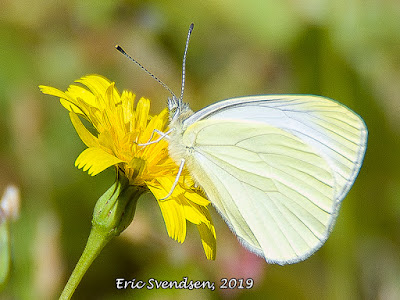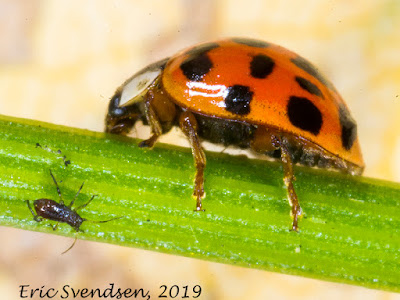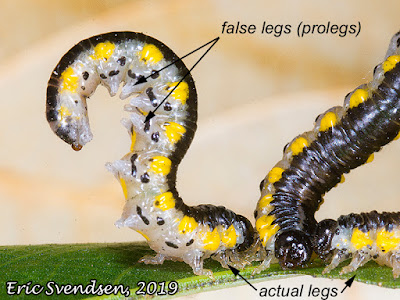Margined white butterfly, also called the mustard white butterfly.
 |
| Margined white butterfly on wild dandelion. |
If you have
seen a white butterfly flitting around in your garden, it likely is the cabbage
white butterfly. This European invader
has supplanted the native margined white butterfly shown above. This is actually not the cabbage white
butterfly’s fault; it is capable of feeding on a wider variety of plants than
the margined. To complicate matters, the
primary food of both is the mustard plant.
Much of the native mustard varieties, which the margined primarily feeds
on, has been replaced by invasive European ones. The cabbage white can eat both plants while
the margined white can only eat native species.
If eggs are mistakenly laid on the foreign variety, the growing
caterpillars die.
According to
William Neill, author of Butterflies of the Pacific Northwest, the
margined white butterfly used to be common throughout most of mid latitude
North America. I found this one in a
very rural area of Washington state, far away from the influence of man.
The cabbage
butterfly is aptly named, because (believe it or not) cabbage is one of the
plants in the mustard family. So are broccoli,
cauliflower, rutabaga, Brussels sprouts, and rapeseed. Guess how many of those are native to North
America? None. Even many of the wild members of the mustard
family are introduced. Shepard’s purse
is an example.
This is why
the cabbage white butterfly’s population has soared while the margined white’s
has plummeted. So many of the native
plants have been replaced by introduced species. A margined white butterfly female cannot tell
if the plant is native or not, whether her young will survive to adulthood on
the food source she has placed them upon.
Chances are they will not. It is
only in the areas where man’s introductions have not replaced native species
where her eggs will really stand a chance to grow.



Comments
Post a Comment